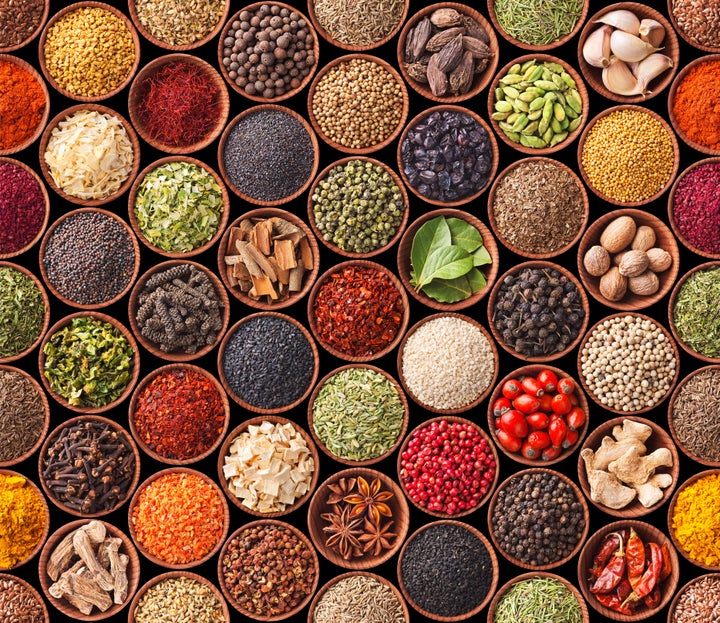When it comes to health goals, the new year marks a reset point for many of us. After months of stress eating, pandemic cooking and staying indoors, many of us have ignored our bodies. Though we can’t control much external stress, we can strengthen our immune systems and minds to better face the challenges that lie ahead. One of the ways we can do this by tapping into the knowledge our ancestors have been using for thousands of years.
Ayurveda is a traditional Hindu system of medicine that’s pseudoscientific in both theory and practice. It originated on the Indian subcontinent, and its purpose is to heal, boost immunity and maintain the quality and longevity of life. Rooted in the belief that poor digestion is the cause of 90% of illnesses, ayurveda utilizes diet, lifestyle and stress management techniques to promote health. A sister science to yoga, ayurveda was originally written in Sanskrit shlokas (poems) and passed down through gurus. Today, it’s accessible through wellness centers and health practitioners who specialize in it.
Eastern and Western sciences agree that we need to listen to our bodies and pay attention to signs of discomfort or imbalance, but ayurveda isn’t a licensed practice in the United States. According to Johns Hopkins Medicine, “practitioners of ayurveda in India undergo state-recognized, institutionalized training. Currently, ayurvedic practitioners are not licensed in the United States, and there is no national standard for ayurvedic training or certification. However, ayurvedic schools have gained approval as educational institutions in some states.”
Angela Merwin, a registered dietitian nutritionist, warns her clients before starting any new diet program. “There is no one diet that works for all people. Most diets have bits and pieces of truth in them, but are usually too restrictive to be sustainable.” But she says some of the principles of ayurveda, such as eating according to one’s body constitution, can be helpful.
It’s best to consult with an experienced ayurveda practitioner and your doctor to get a personalized health plan before starting any new regimen. But here’s just a start of what we can learn from ayurvedic diet principles.
The Basic Principles Of Ayurveda
“The first and most important thing to know about ayurveda is that it’s not a one-size-fits-all solution,” said Kimberly Rossi, director of business development and wellness at Art of Living Retreat Center and Shankara Ayurveda Wellness in Boone, North Carolina. She explains that according to ayurvedic beliefs, each individual has a different constitution, based on five elements: space, air, fire, water and earth. The interplay of each of those elements manifest into three types of energies or doshas, namely vata, kapha and pitta (you can take a basic dosha quiz to find out your predominant energy).


The main goal of an ayurvedic diet is to keep the digestive fire at the optimal temperature to regulate vitality, energy, enthusiasm, hormones, the mind and chronic illnesses, and return the body to balance. To do this, ayurveda suggests you eat according to your age, dosha, health, season and location.
Foods That Give ‘Life Force’
In ayurveda, sattvic, or pure diet, means eating foods that are considered to have higher frequencies and are full of life force. It is no surprise then, that ayurvedic food is based on (but not limited to) plant-based, natural, organic and seasonal ingredients. Ghee (clarified butter), vegetables, fruits, spices, herbs, legumes and grains are consumed in their original forms. Dairy is limited based on an individual’s body constitution. Refined sugar, caffeine and alcohol are avoided.
Water is an important component of the ayurvedic diet, acting as a stream that keeps things in motion and moves toxins out of the body. Ayurveda recommends drinking half of your body weight in ounces of water every day and consuming approximately one cup every hour in the summer and half a cup each hour in the winter. One should avoid drinking copious amounts of water before, during or after a meal.
Drinking ice water is not considered good for the digestive system, according to ayurveda. You should only sip on warm water in winter, and room temperature water in the summer.
Ayurvedic Cooking Practices
Ayurvedic cooking utilizes six flavors ― sweet, sour, salty, bitter, pungent and sour. “If you include all of these in at least one of your meals each day, you will not have any food cravings,” said Sujata Shah, ayurveda practitioner and programs supervisor at The Art of Living Retreat Center. Shah teaches how to eat, when to eat, and what foods to combine for each body type.

Most dishes in ayurvedic cooking are stir-fried, roasted or steamed. Vegetables, plant-based proteins and complex carbohydrates (such as rice, bread and quinoa) are used to create staples that kindle the digestive fire, such as ginger beet soups, red lentil stew and protein pancakes.
Ayurveda also places importance on cooking fresh food every day. “When you freeze and microwave food to reheat, essential nutrients are lost,” Shah said. “Even if you are short on time, invest in an Instant Pot and have at least one warm meal a day.”
Next, it’s important to use spices and herbs to season your dishes and incorporate the six flavor profiles. Spices play a big role in flavoring food and are believed to have medicinal benefits, too. Shop for good-quality, fresh and organic spices such as turmeric, black pepper, cinnamon, fennel, cumin and coriander.
It’s also important to cook with ghee, a healthy fat that is rich in Omega-3 fatty acids.
Shawn Stevenson, author of the book ”Eat Smarter,” and host of the podcast ”The Model Health Show,” also attests to ghee and spices as superfoods. He does not recommend limiting food choices though, as long as you pick the best-quality ingredients. “For optimal health, we need a wide variety of nutrients, and should not eat the same few things all the time,” said Stevenson, who has practiced and taught different kinds of food sciences. According to Stevenson’s research, the unique genetic makeup of each person allows them to absorb certain foods while others can’t. This again attests to the “no one size fits all” theory of diet and nutrition.
The Importance Of Timing Meals In Ayurveda
Eating three meals a day with no snacks in between gives the body ample time to rest and rejuvenate. According to ayurveda, a warm breakfast should be eaten between 6 to 8 a.m., and a nourishing lunch between 11 a.m. to 1:30 p.m. “At lunch time, our digestive fire is at its peak, so we need to give it the most fuel,” Rossi said. She says to carve out at least 20 minutes to sit down and slowly chew your food, rather than a grab-and-go lunch.
A light supper should be had no later than 7 p.m. Rossi clarifies that it is OK to indulge in a late weekend meal, an occasional sweet treat or an alcoholic beverage. While you will feel the positive effects of ayurveda the longer you practice it, you don’t have to be regimental about it. Most ayurveda practitioners say that if you even observe it four out of seven days a week, you will notice positive changes in your health.
Stevenson shares a similar position when it comes to timing meals. He recommends fasting for at least 12 hours (for example, from 7 p.m. to 7 a.m.) to allow the body to channel its resources toward rejuvenation rather than digestion, though he is not strict about eating three square meals a day. Fasting for 12 hours a day is essentially intermittent fasting, whose potential benefits include weight loss, increased muscle mass and increased energy levels.
“We should do what serves our own interest. For some people dinner is the main meal, and that is fine too,” he said.
Where To Start
“Most diet frameworks give people specific guidelines, but don’t teach the overarching principles that show the multifaceted dynamic effects of food beyond weight loss,” Stevenson said. “It is important to look at food more holistically as it controls your metabolism, memory, sleep, and so many other aspects of your life.”
To get a taste of recipes that follow ayurvedic principles, Shah has shared two of favorites below.
Ginger Beet Soup
- 2 medium size beets, cubed
- 4 cups of water
- 1 quarter size fresh ginger root
- 1 teaspoon fennel seeds
- 1/2 teaspoon salt
- 1/2 teaspoon black pepper
- 1/2 teaspoon ground peppercorn (optional)
- 1 tablespoon extra virgin olive oil
Boil beets and ginger root until tender, for about 30 minutes. Let cool. Pour the contents of the soup into a blender and add oil, fennel, salt and pepper. Blend until smooth. Serve warm.
Immunity Spice Drink
- 1 teaspoon organic turmeric
- 1/2 teaspoon ground cinnamon
- 1/2 teaspoon fennel seeds
- 1 teaspoon grated fresh ginger or ginger powder
- 2-3 clove pods (or 1/3 teaspoon of ground cloves)
- 1/3 teaspoon of black pepper or 2-3 peppercorns
- 1/2 teaspoon of cardamom seeds (or ground cardamom)
- 4 cups of filtered/purified water
- 1 teaspoon organic honey
Put all the ingredients except honey in a medium saucepan and bring to a boil over low heat. Cook for about 15 minutes, until well mixed. Let it cool down to warm, add honey and drink two times a day.
Credit: Source link